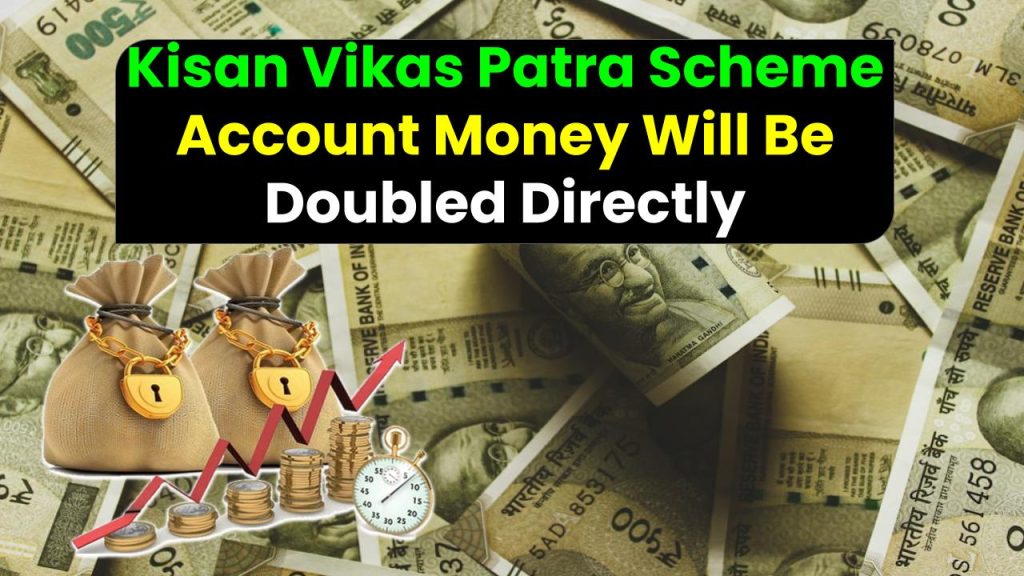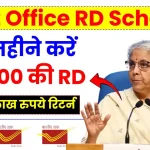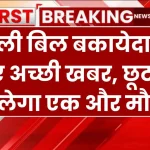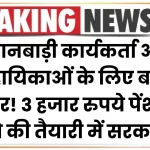
Are you searching for a safe, guaranteed way to double your money? The Kisan Vikas Patra (KVP) Scheme Account might be the perfect solution! This government-backed savings scheme, offering an attractive 7.5% annual interest rate, ensures that your investment will double in just 115 months (9 years & 7 months). Whether you’re a cautious investor, a beginner, or a seasoned professional seeking steady returns, KVP is worth considering.
In this guide, we’ll break down everything about Kisan Vikas Patra, making it simple to understand. We’ll cover how it works, how much you need to invest, tax implications, who is eligible, and how you can start investing today. Let’s dive in!
Kisan Vikas Patra Scheme Account
| Feature | Details |
|---|---|
| Scheme Name | Kisan Vikas Patra (KVP) |
| Interest Rate (FY 2024-25) | 7.5% per annum, compounded annually |
| Maturity Period | 115 months (9 years and 7 months) to double your investment |
| Minimum Investment | ₹1,000 (in multiples of ₹100 thereafter) |
| Maximum Investment | No upper limit |
| Eligibility | Any Indian resident (individuals or minors via guardian) |
| Premature Withdrawal | Allowed after 2.5 years (30 months) |
| Tax Benefits | Interest is taxable, but withdrawals post-maturity are TDS-free |
| Loan Facility | KVP certificates can be used as collateral for loans |
| Official Website | India Post |
The Kisan Vikas Patra Scheme Account is a time-tested, reliable savings scheme, perfect for those who prefer guaranteed returns without market risk. The current 7.5% interest rate ensures your money doubles in 115 months, making it an ideal choice for long-term planners and risk-averse investors. However, professionals should weigh its lack of tax benefits before investing.
What is the Kisan Vikas Patra Scheme?
The Kisan Vikas Patra (KVP) was introduced by the Government of India to encourage long-term savings among citizens, especially in rural areas. Initially launched in 1988, KVP quickly gained popularity because of its simplicity, safety, and guaranteed returns. The scheme is currently offered through Post Offices and some designated banks.
KVP is ideal for individuals who want to grow their money securely without taking market risks. The scheme promises that your invested amount will double in 115 months, thanks to the fixed 7.5% annual interest rate (as of Q4 FY 2024-25).
see also: Depositing ₹2,500 Every Month Will Give You Huge Returns
How Does Kisan Vikas Patra Work?
The working of KVP is straightforward:
- Invest a minimum of ₹1,000 (in multiples of ₹100).
- The money is compounded annually at 7.5% interest.
- After 9 years and 7 months (115 months), your investment doubles automatically.
For example:
- Invest ₹50,000 today → Receive ₹1,00,000 at maturity.
Types of KVP Accounts:
- Single Holder Account: For individual investors.
- Joint A Account: Jointly held by two or three adults, payable to all holders.
- Joint B Account: Payable to any one of the holders or survivors.
Eligibility Criteria
The scheme is open to:
- Any resident Indian adult.
- Minors through their guardians.
- Hindu Undivided Families (HUFs) and Non-Resident Indians (NRIs) are not eligible.
Interest Rate & Maturity Details
Current Interest Rate:
- 7.5% per annum, compounded annually (Applicable for January-March 2025 quarter).
Maturity Period:
- 115 months (9 years & 7 months) to double your investment.
This fixed rate ensures steady, predictable returns unaffected by market fluctuations, making it a great fit for risk-averse investors.
Tax Implications on Kisan Vikas Patra
- No tax deduction under Section 80C.
- Interest earned is taxable as per your income tax slab.
- However, no TDS is deducted at maturity—giving you full control over your tax planning.
While it lacks direct tax benefits, its secure nature and compounding interest make it an attractive long-term option.
Loan Facility Against KVP
Need a loan but don’t want to liquidate your savings?
KVP certificates can be pledged as collateral security to banks and financial institutions. This allows you to avail loans without breaking your investment prematurely.
Premature Withdrawal Rules
Premature encashment of KVP is allowed only:
- After 2.5 years (30 months) from the date of issuance.
- In case of the death of the holder(s).
- On court orders.
Withdrawals before maturity may not give the full benefit of compounding but offer liquidity when needed.
How to Open a Kisan Vikas Patra Account
Investing in KVP is simple. Follow these easy steps:
Step 1: Visit Your Nearest Post Office or Designated Bank
Most post offices and select banks like SBI, PNB offer KVP account facilities.
Step 2: Obtain and Fill the Application Form
Request the Kisan Vikas Patra application form. Fill in personal details, investment amount, nominee information, and type of account.
Step 3: Complete KYC Formalities
Submit valid documents:
- Aadhaar Card (mandatory)
- PAN Card
- Passport-sized photo
- Address proof
Step 4: Payment
Make payment via:
- Cash
- Cheque
- Demand Draft
Step 5: Receive Your KVP Certificate
Once processed, you’ll be issued a KVP certificate. Keep it safely—it’s essential for claiming maturity proceeds.
Practical Tips: Who Should Invest in Kisan Vikas Patra?
- First-time investors seeking a safe, government-guaranteed scheme.
- Risk-averse individuals, especially senior citizens.
- Parents investing for their children’s future.
- Investors wanting to diversify their portfolio with non-market-linked options.
- Professionals seeking a steady, fixed return without active monitoring.
However, if you’re looking for tax-saving instruments or higher returns (with associated risk), schemes like ELSS, PPF, or Mutual Funds may suit better.
see also: Are You Planning to Get a Credit Card for the First Time? Keep These Things in Mind
Kisan Vikas Patra Scheme FAQs
Q1. How much can I invest in Kisan Vikas Patra?
You can start with ₹1,000, with no upper limit. You can invest in multiples of ₹100 thereafter.
Q2. Is the interest earned from KVP taxable?
Yes, the interest is taxable according to your income tax slab. However, there’s no TDS deduction at maturity.
Q3. Can I encash KVP before maturity?
Yes, but only after 2.5 years (30 months) or under specific circumstances like death of the holder.
Q4. Can NRIs invest in Kisan Vikas Patra?
No, only resident Indian individuals can invest in KVP.
Q5. How is KVP different from PPF?
While KVP doubles your money with fixed returns, PPF offers tax-free returns and tax benefits under Section 80C, but with a longer lock-in period (15 years).












1 thought on “Kisan Vikas Patra Scheme Account: Money Will Be Doubled Directly in This Government Scheme With an Interest Rate of 7.5%”